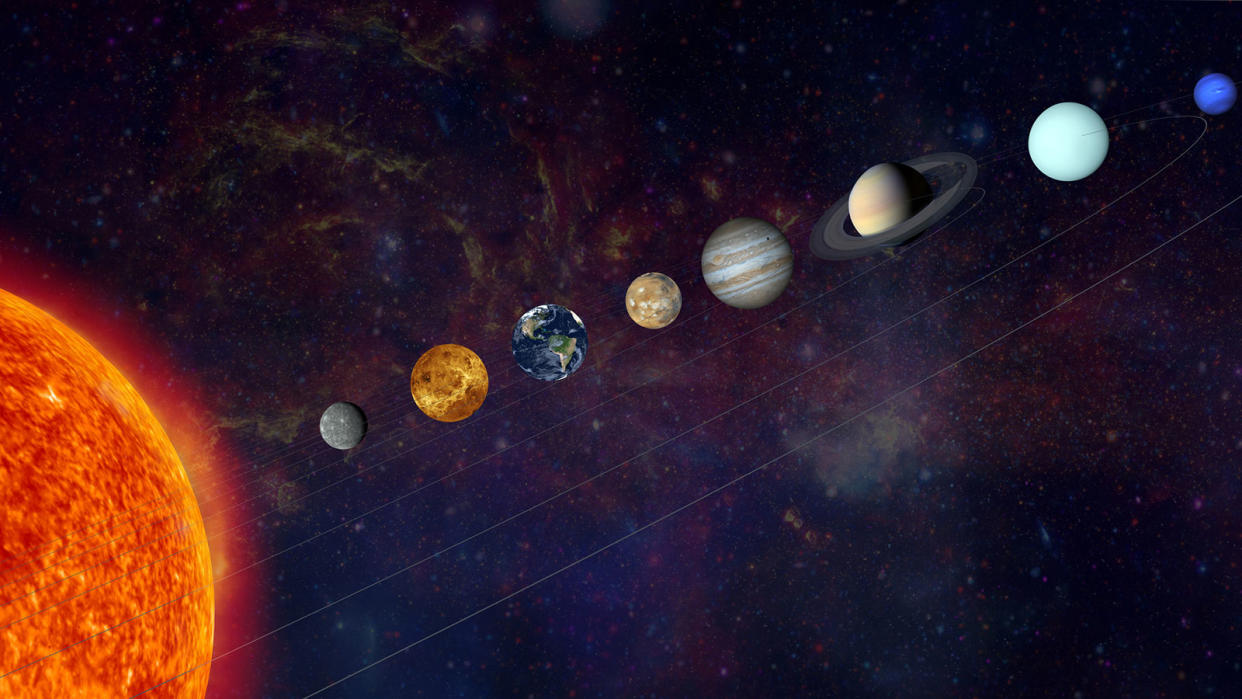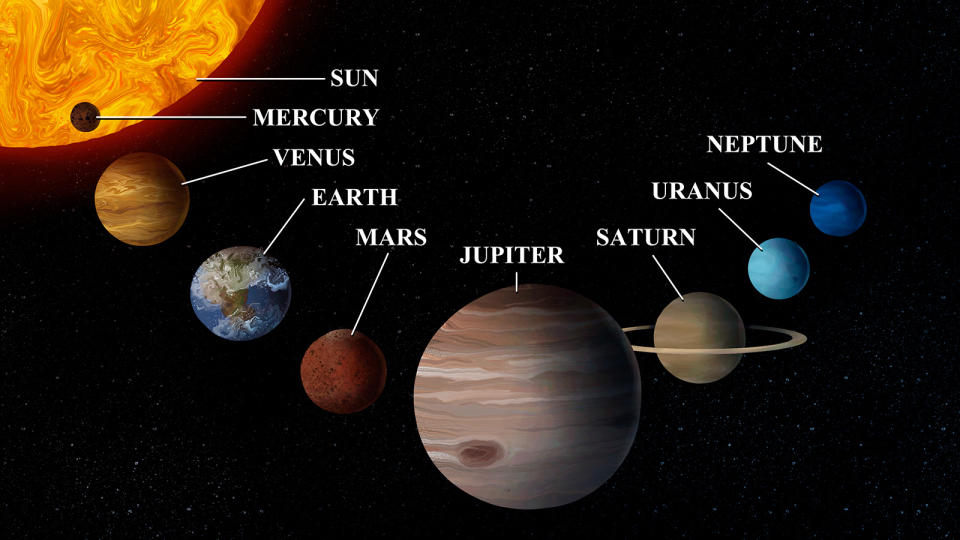Do the Planets Ever Actually Align?

You've probably heard it in some horoscope somewhere: The stars are aligned — or maybe the planets are aligned, so now's the time to buy a lotto ticket! In any case, you might wonder what that means: Can the planets actually all line up in a row in the sky?
Is an 8-Planet Alignment Possible?
While there are certainly headlines about it from time to time, full planetary alignment is actually virtually impossible, and even seeing all the planets on the same side of the sun in the sky is incredibly uncommon. Life on Earth will likely look very different by the next time you can see any sort of planetary alignment in the night sky, even if you're only waiting for five or six planets to appear in a remotely straight line.
Orbits, Axial Tilts and Planetary Alignment
Due to the different orbits of the planets in our solar system, it's actually impossible for them all to come into anything that might resemble an alignment from our perspective on Earth. Though we're often taught that the solar system is a flat plane where all of the planets orbit on the exact same level, each planet has its own unique orbit within the ecliptic, an imaginary line in the sky that marks the path of the sun. Mercury has the most deviation, within 7 degrees of the ecliptic, but the other planets vary around 3 degrees from perfectly flat.
That also doesn't include the other objects in the solar system. Former planet Pluto has a 17-degree deviation from the orbital plane of the solar system, and other dwarf planets are even more erratic compared to the eight main planets. While these numbers might not sound very big, it's enough to make planetary alignment pretty much impossible from our perspective on planet Earth, the "third rock from the sun."
If you instead try to imagine the eight major planets in a single line stretching out from the sun (and within 1 degree of each other), it's estimated this occurs roughly every 13.4 trillion years. For context, our solar system is 4.5 billion years old, and the universe is only 13.7 billion years old. So this alignment has likely never happened — and will never happen, as the sun is expected to expand to become a red giant in roughly 5 billion years, wiping out Mercury and Venus for sure and coming dangerously close to Earth.

Planets Sharing the Night Sky
It's also uncommon for all eight main planets to even be in the same part of the sky; this occurs every few thousand years and was last recorded in 949 C.E. If you'll settle for six planets visible from Earth all at once, you can get a glimpse of that rarity on June 3, 2024, Aug. 28, 2024, and Jan. 18, 2025.
When you focus on just the visible planets — that's Mercury, Venus, Mars, Jupiter and Saturn — even seeing those five neighbors in the same part of the night sky isn't an every-night occurrence.
Now That's Interesting
While we certainly know that gravity has an impact on celestial bodies (and those of us who call them home), there's nothing to fear from those rare times when planetary alignments occur. There's no meaningful impact on Earth when the planets are aligned at all — though NASA has used planetary alignment to its advantage when launching missions to explore multiple planets and solar system objects, such as the Voyager 2 "Grand Tour" which began in 1977.
Original article: Do the Planets Ever Actually Align?
Copyright © 2024 HowStuffWorks, a division of InfoSpace Holdings, LLC, a System1 Company

 Yahoo News
Yahoo News 
